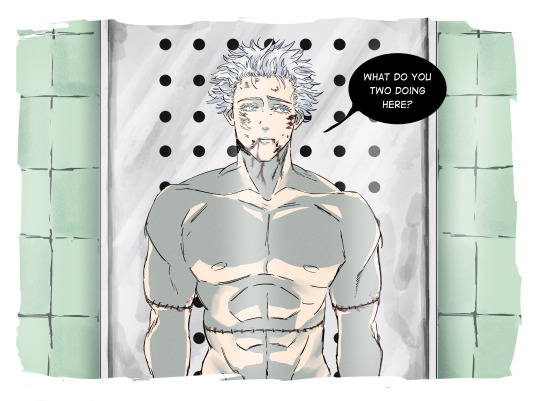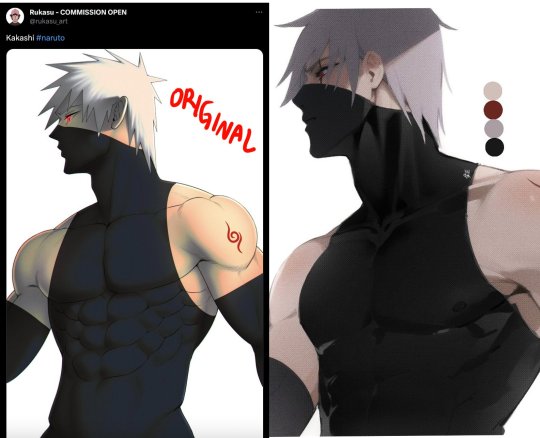she/her - ao3 - currently living in stsg hell ✌️ - sappy/silly edits & occasional writing
Don't wanna be here? Send us removal request.
Text
On the Mechanics of Lyctorhood
I want to preface this by saying this is a long, long post that is going to delve deep into lyctorhood, skim the surface of physics and biology, and fully embrace conjecture! If I'm right about all this then I'm very happy, but I also cannot wait to be disproven in Alecto the Ninth.
Thanergy
Thanergy is the product of the decay of thalergy: this is the principle that underpins all of necromancy. All necromantic adepts are capable of manipulating both thalergy and thanergy, but necromancy is shown to be reliant on thanergy specifically, and is most geared toward utilising thanergy as a result.
“Thalergetic decay causes cellular death,” you said carefully, pressing the nail in harder, “which emits thanergy. The massive cell death that follows apopneumatism causes a thanergetic cascade, though the first bloom fades and the thanergy stabilises within thirty to sixty seconds.” [Harrow the Ninth]
As shown by @pokkop15 in this post the term thanergy is almost certainly derived from Thanatos, the Greek God of Death, but thalergy's origins are more murky: likely candidates are thaleros (a greek word that means lively), Thalia (the muse of Festivity whose name also means blooming), or Thalassa (divine personification of the sea in greek mythology, which would fit considering how life is very associated with saltwater in TLT).
The Eightfold Word: What is Lyctorhood?
According to the resident tall glass of skank and questionably reliable narrator, Ianthe Tridentarius, the Eightfold Word is composed of the following steps:
Preserve the soul, with memory and intellect intact.
Analyse it—understand its structure, its shape.
Remove and absorb it: take it into yourself without consuming it in the process.
Fix it in place so it can’t deteriorate.
Incorporate it: find a way to make the soul part of yourself without being overwhelmed.
Consume the flesh [NOTE: Ianthe says 'a drop of blood is enough to ground you', which to me indicates that this step serves as a way to ground the incorporated soul into the lyctor's body, by having material from the soul's original body. This is very significant.]
Reconstruction—making spirit and flesh work together the way they used to, in the new body.
Hook up the cables and get the power flowing.
Lyctorhood seemingly works by providing the necromancer with, among other things, a near limitless reserve of thanergy that is presumably derived from the incorporated soul once the power is flowing: as we see with Cytherea healing herself, lyctors are either unable to generate thalergy—or their ability to do so is lessened in comparison to their ability to generate thanergy—and must instead siphon it from external sources when their own thalergy is depleted.
In Nona the Ninth we are introduced to Palamedes' conception of Lyctorhood in terms of Lysis: the Lyctorhood we are most familiar with is Petty Lysis, where only one of the components dies, while Grand Lysis is a mutual death—a gravitational singularity creating something new, as is the case with Paul. Lysis is a term used in biology that refers to 'the breaking down of the membrane of a cell', which as I've explored before
In the series, Lyctorhood is spoken of in terms of fire: there are repeated references to Gideon's soul being made the furnace of [Harrow's] Lyctorhood and serving as a furnace of power, Mercymorn refers to her cavalier's mortal soul burning in her chest, John says that the risk posed by fully incorporating Alecto into himself completely would be that he'd probably burn to death, and Paul's birth results in Camilla's body being consumed by flames. This leads us on to how lyctorhood is also characterised as consumption: eating the cavalier, absorbing their soul, burning it for fuel.
What is the mechanism behind the thanergetic generation of lyctorhood?
Lyctorhood is barbaric, it is cannibalism, it is taking another and burning them in yourself for power. But that raises the question of where that power comes from. By the way that thalergy/thanergy are spoken of with terms reminiscent of radiation, coupled with how lyctorhood is rendered through metaphors and imagery related to fire and/or consumption, it would seem that the logical conclusion behind this is that the soul is being subject to continual thanergetic fission.
The terminology Tamsyn uses is something that lends credence to this: nuclear fission 'occurs when a neutron slams into a larger atom, forcing it to excite and split into two smaller atoms—also known as fission products'. Sudden, sharp decay/conversion of thalergy into thanergy could be the mechanism behind thanergetic fission, as we see with Harrow's description of apopneumatic shock and how the burst of thanergetic energy (a neutron slamming into a larger atom, forcing it to excite) is sufficient to prevent liminal osmosis from taking place: "In cases of apopneumatic shock, where death is sudden and violent, the energy burst can be sufficient to countermand osmotic pressure and leave the soul temporarily isolated."
But from what we know of the nature of the thanergy, thalergy, and the soul, this explanation makes no sense. Thanergy is emitted by thalergy decay, but souls in of themselves are not a source of thalergy nor thanergy, as shown by Anastasia's tripod principle: “The body needs thalergy and a soul to keep the lights on. Anastasia’s tripod principle. Body plus thalergy, but no soul, is basically a very weird vegetable … after a while it gives up and shuts down.” [Nona the Ninth]
Going back to the nuclear terminology, I'm going to cut straight to the core of this theory: the mechanism behind the thanergetic generation of lyctorhood is thanergetic fusion.
What is thanergetic fusion?
The term I use here is a misnomer, because a more accurate term would be pneumatic fusion, considering how Tamsyn Muir is fond of using the Greek pneuma to refer to the soul: nuclear fusion 'is a reaction in which two or more atomic nuclei combine to form one or more different atomic nuclei and subatomic particles'.
A nucleus in physics is 'the positively charged central core of an atom, consisting of protons and neutrons and containing nearly all its mass', while in biology the term refers to 'a dense organelle present in most eukaryotic cells, typically a single rounded structure bounded by a double membrane, containing the genetic material'. Palamedes uses the term lysis for Lyctorhood, which as you'll recall refers to the disintegration of the cell membrane, thus exposing it's innards: such as the nucleus. The soul is the nucleus.
Nuclear fusion involves combining two or more atomic nuclei to form one or more different atomic nuclei and subatomic particles: the difference in mass between the reactants and products is manifested as either the release or absorption of energy; as a rule of thumb the fusion of lighter nuclei releases energy, making it an exothermic process, while the fusion of heavier nuclei results in energy being retained by the product nucleons, and thus the resulting reaction is endothermic. An exothermic reactions releases heat, causing the temperature of the immediate surroundings to rise, while an endothermic one absorbs heat and cools the surroundings.
In the context of this nuclear fusion explanation of Lyctorhood, an exothermic (exothanergetic) reaction releases thanergy while an endothermic (endothanergetic) reaction absorbs thanergy: the fusion of lighter souls release thanergy, the fusion of heavier souls absorbs it.
What are the implications behind these mechanics?
The question that comes to mind is what is a heavier soul? The answer, once again, lies in physics: "The heaviest atomic nuclei are created in nuclear reactions that combine two other nuclei of unequal size into one; roughly, the more unequal the two nuclei in terms of mass, the greater the possibility that the two react." [Wikipedia]
How does John explain the soul of a planet to Harrow?
John: “And what has a soul?” Harrow: “Anything with a thalergetic complexity significant enough to … have a soul. So, humanity.” [...] Harrow: “A planet’s a ball of dust. Its thalergy comes from the accumulation of microbial life. You can’t consider it one coherent system.” John: “Call it a communal soul. What’s a human being, other than a sack of microbial life?
Planets' souls are communal, formed from the thalergetic complexity of an entire world coalescing into a nuclei that lies at its heart, heavy in a way a human soul is not: a human soul is light, a planet's soul is heavy. In other words, Alecto is a heavy nuclei and John is a light nuclei, with the resultant nuclei of their combination forming something heavier than either: an endothanergetic reaction.
Moving back to thanergetic fission and the apopneumatic shock of a violent death, we can now examine what happens when John becomes God:
He becomes aware of Alecto when Cristabel kills herself in front of him.
Now aware of Alecto, he creates a massive flood of thanergy by inciting the violent deaths of millions, possibly billions, through the detonation of nuclear devices.
Empowered by the mass thanergetic fission caused by an untold number of apopneumatic shocks, 'I became a demigod', he finishes off the rest.
He kills Alecto, takes her soul in his hands, and attempts to become one with her.
He almost fails, and during this flawed process is forced to split her soul between his body and another, hiding himself in her and herself in him.
Fusion still occurs, this reaction is endothanergetic and allows him to near absorb a massive amount of thanergy in one sitting: "And when we were together … once the shaman had claimed the sun … I became God."
He violently kills the rest of the planets in the system, flipping them and creating a surplus of thanergy, a process of large-scale energy creation and transferall: to quote Ianthe once again, "You see, my field has always been energy transferral … large-scale energy transferral. Resurrection theory."
What this all means is that the secret behind the Resurrection is that John's Lyctorhood works fundamentally differently to that of his Saints, because his is endothanergetic where theirs is exothanergetic, a reaction between a heavy and a lighter nuclei.
Not only is it endothanergetic instead of exothanergetic, it generates a different form of energy. Emperor John Gaius produces thalergy.
Resurrection Theory
As we know from Anastasia's tripod principle, thalergy alone cannot make life, a soul is also needed—meaning that the inverse is true, in that a soul alone cannot make life, thalergy is needed; In order for John to have performed the Resurrection, he would have needed to imbue bodies with both their soul and thalergy to recreate the life he took in the first place. Logically, this means that John would have to be able to create thalergy. John is the only being in the universe who is able to generate thalergy, namely via the continual fusion reaction between a heavy soul and a light soul, also known as Alecto and himself, to produce it.
Let us return to what Augustine says of the nature of his power: “You don’t get your power from Dominicus,” said Augustine. “It gets its power from you. There’s no exchange involved, no symbiosis. You draw nothing from the system. It relies on you entirely, as we all know. You’re God, John. But—as the Edenites are fond of pointing out—you were once a man. So whither that transition? Where does your power come from? Even if the Resurrection had been the greatest thanergy bloom ever triggered, it would drain away over time.”
John is the source of fresh thanergy in the system: he produces thalergy, which he can decay into thanergy. The thanergy in the system is finite, it would drain away after enough time, but his heavy and light soul reaction producing thalergy that can then be decayed into thanergy allows for new thanergy to be introduced into the system; John's necromancy's unique in that it relies on the rapid creation of thanergy via accelerated thalergetic decay, resulting in thanergetic fission.
Why do I say thanergetic fission? Becase it could explain why his necromancy is shown to manifest as large amounts of light, because what does thanergetic fission result in? We see when Palamedes utilises the rapid thanergetic fission of his thanergy reserves to blow up in Cytherea's face:
The sickroom exploded into white fire, and the bonds pinning Gideon snapped. She fell hard against the wall and spun, drunkenly, lurching back down the corridor as Palamedes Sextus made everything burn. There was no heat, but Gideon sprinted away from that cold white death without bothering to spare a glance behind as though flames were licking at her heels.
White light that gives off no heat. What happens when John reassembles himself?
White light. It bleached the insides of your nose and the back of your throat. It hurt coming out your ears. It bled out your eyeballs. It wasn’t a flash of light, more … a suddenness; when it was gone—as though it hadn’t even existed, but had been a luminous hallucination—time stopped.
Speaking of that scene, it is likely the most definitive proof we see that John produces thalergy, because there is no way for his body to function without thalergy, and thanergy cannot be converted to thalergy (as far as we know). That thalergy has to come from somewhere. John, the Resurrector, is able to create thalergy.
Do you know where else we see what is explicitly called a form of resurrection? The endothanergetic reaction that created Harrowhark Nonagesimus: "My parents gassed fifty-four infants, eighty-one children, and sixty-five teenagers, and harnessed that thanergy bloom to conceive me. My mother used the resultant power to modify her ovum on a chromosomal level, so thanergy ignition wouldn’t compromise the embryo. She did this so I would be a necromancer." [Harrow the Ninth]
A large amount of thanergy is generated within an instant by closely-timed apopneumatic shocks caused by sudden death via what Harrow specifically names as nerve gas [Gideon the Ninth]. This brings to mind thanergetic fission as opposed to fusion, due to the fact it relies on thanergy, but the key detail here lies in two factors: the unequal size of the nuclei (souls) involved here, and the fact these souls are shown to have been manipulated.
The souls—emphasis on souls, as opposed to thanergy—of a large amount of children, of varying ages, are forcibly prevented from passing to the River via liminal osmosis due to the sheer amount of thanergy involved, and they are tied to Harrow's soul, as shown by Abigail commenting on her unique spiritual signature: "I’ve counted up to one hundred and fifty signatures contributing to you, and there’s more—they’re stamps rather than complete revenants, of course, which means their spirits were manipulated to leave marks on you in some way, which is fascinating if it means…"
What is a planet's soul? A communal one, the thalergy complexity of a world. What is Harrow's soul? A communal one, exactly two hundred sons and daughters of her House, manipulated to be stamped on her original one. I cannot speak of what this means, but it means that Harrow's soul is naturally heavier than John's: a nuclei formed from two hundred others.
Conclusions
Lyctorhood is nuclear fusion, with souls as the nuclei: the combination of souls produces thanergy as a byproduct of the process of forming a new nuclei; Souls are not a perpetual energy source, and are unable to generate thanergy or thalergy on their own, it is the combination of them that creates thanergy or thalergy.
Petty Lysis, the Lyctorhood of the Saints, is an exothanergetic reaction which produces thanergy as the two souls involved are melded over untold years: it is not a one-way consumption, it is a fusion, but the power transferral does only go one way, due to the fact it is not a mutual death. Grand Lysis is a more complete, and thus powerful, version of this reaction wherein the two nuclei are fully combined within an instant, as opposed to gradually combined.
John's joining with Alecto works on the same fusion principle of Lyctorhood, but the difference lies in the nature of the reaction at the heart of it: he is endothanergetic and produces thalergy as opposed to thanergy, which he can subsequently decay into thanergy to fuel his necromancy. The Resurrection was made possible by him generating thanergy.
Final Note:
I want to point out something before anyone else can, and that is the fact Lyctors could be interpreted as working on pneumatic fission as opposed to fusion: meaning that the constituent souls are split to produce power, and that the exothanergetic and endothanergetic reactions would be reversed—John exothanergetic instead of endothanergetic, and vice versa with Petty Lyctors, which explains why they appear to be thanergy voids: they absorb all thanergy in their surroundings.
I considered this while writing this theory, but ultimately I found that fusion seemed more likel. Alternatively, both Paul and John are examples of pneumatic fusion due to their more complete Lyctorhood while the Petty Lyctors are working on pneumatic fission. I prefer the idea that all Lyctorhood is pneumatic fusion, which is why I ultimately leaned into that interpretation in this post.
Thank you for reading.
827 notes
·
View notes
Text

classic
15K notes
·
View notes
Text
musk is going to die in a Tesla explosion in 6 months after sticking his nose where it doesn't belong and we will never get a conclusive answer on whether it was a CIA car bomb or just a normal Tesla malfunction
189K notes
·
View notes
Text
Yup returning to necromancy, I’m so back. And you’re so back, and you’re so back, and you’re so back, and you’re
73K notes
·
View notes
Text
researching parrying daggers as a fun little treat and i'm delighted by how much every single one of these things looks like it's designed to be as annoying as possible
135K notes
·
View notes
Text










SCENE INSPIRED BY CHAPTER 21 OF COANDA EFFECT BY @bunnieshoneys ‼️‼️‼️‼️‼️‼️‼️
I LOV THE SOO MUCH ITS MY BRAINROT RIGHT NOWWW AAAAAAAAAAAA TY FOR THIS
5K notes
·
View notes
Text

training days
3K notes
·
View notes
Text



payback
10K notes
·
View notes
Text



can't help it (also hb suguru you have the best present ever rn you lucky bastard)
15K notes
·
View notes
Text

“always the years between us. always the years. always the love. always the hours.”
636 notes
·
View notes
Text




I have the full comic but I tweaked the words for two panels to fit Rickey Montgomery’s Mr. Loverman :’)
338 notes
·
View notes
Text

Our destiny was cursed…

Intagram - Twitter - Ko-Fi - RedBubble
907 notes
·
View notes
Text

THIS WEEK WAS SO BUSY
2K notes
·
View notes
Text

"To love, to lose, and still be kind."
-Warsan Shire
68 notes
·
View notes
Text


30 notes
·
View notes
Text
This Twitter user is literally stealing other people's artwork, running it through an ai program, and passing it off as if they're drawing it themselves. It's so disgusting to other artists that I'm just speechless. It's not fair, because they get 20k+ likes while the original artwork gets much less. And this ai user is literally making money off other people's work, fuck you. because of people like you, people who have been drawing for years lose any desire to do anything, because they see how their labor is just simply stealing some piece of shit. I feel bad for all artists, it's really painfully unfair.
Oh and this ai user also has a tumblr(@/vamprein), please yell about it everywhere until they delete the hell out of their account.










2K notes
·
View notes
Text






@fushiglow I feel like there's certainly a Vibe™ somewhere in there, but I'm not sure I understand it. 🤣
rules: search "your name + core" on pinterest, post the first six photos, and tag 6 more people
#i will tag others later lol i promise#is this even my aesthetic? who knows!#my personality is a spectrum lol#they're something ig#tag game#tagging people feels like a commitment 🤣
3 notes
·
View notes